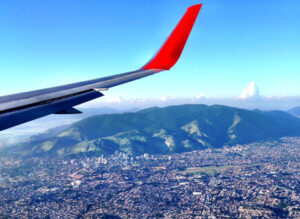One of the places outside of tourism is the Sacred Valley of the Incas, located in Peru’s Andes. The valley is famous for its natural beauty, ancient ruins, and heritage. It is also a source of spiritual and cultural experience. This old Inca capital always amazes visitors with its mystique, history, and connection with nature.

Inca Sacred Valley, situated in the Andes mountain chain of Peru, is a region of concentrated cultural and religious significance. Famous for its remnants of past civilization, vibrantly painted customs, and breathtaking scenery, the valley depicts a characteristic gateway to the heart of Inca culture. Whether it is Pisac’s tiered fields or Moray’s circle ruins, Sacred Valley is a juxtaposition of concentrated heritage and concentrated vegetation.
The Historical Significance
The Sacred Valley, or Valle Sagrado in Spanish, was a vital center for the Inca civilization. Stretching along the Urubamba River, the valley was revered for its fertile lands, strategic location, and spiritual importance.
- The valley served as an agricultural hub, producing maize, potatoes, and quinoa.
- It was a key route connecting Cusco, the Inca capital, to Machu Picchu.
- The Incas built numerous temples, fortresses, and terraces, many of which remain intact today.
It was a physical stronghold and a spiritual sanctuary. The Incas believed the valley was a reflection of the Milky Way, with its rivers and mountains mirroring celestial patterns. One can cruise the Amazon river and see all the magical places it offers if one wants to visit.
Spiritual Energy
The Sacred Valley is often a description used for powerful energy. While wandering about its surroundings, most visitors feel an overpowering sense of peace and connectedness. The Incas held the high mountains, referred to as apus, surrounding the valley in awe as sacred.
Rivers, rocks, and other geographic elements were considered spiritually significant. Old ceremonies and rituals revered Inti (Sun God) and Pachamama (Mother Earth). The valley continues to be a magnet for healers, spiritual seekers, and nature reconnectors today. In this peaceful environment, yoga, meditation, and energy healing are commonly practiced.
Key Cultural Sites
The Sacred Valley has numerous archaeological sites, each offering a glimpse into the Inca civilization. Let’s take a look at some of the most popular ones:
Pisac
Pisac is renowned for its impressive terraces and ruins. The site includes a ceremonial center, agricultural terraces, and a military complex.
- The Pisac market is a vibrant cultural experience showcasing local crafts and traditions.
- The Intihuatana stone, a ritual stone used by the Incas, is a highlight of the site.
Ollantaytambo
Ollantaytambo is one of the best-preserved Inca towns. It features a massive fortress and temple complex.
- The site served as both a religious center and a military stronghold.
- The terraces at Ollantaytambo are an engineering marvel, showcasing the Inca’s advanced agricultural techniques.
Moray
Moray is an archaeological site known for its circular terraces.
- The terraces were likely used as an agricultural laboratory to study crop growth at different altitudes.
- The site’s unique design creates microclimates, demonstrating the Inca’s deep understanding of nature.
Chinchero
Chinchero is a traditional Andean village with a rich cultural heritage.
- The village is famous for its textile traditions, with locals using ancient techniques to create vibrant fabrics.
- The colonial church, built on Inca foundations, is a testament to the region’s layered history.
Natural Beauty
The valley is a nature lover’s dream come true. Its varied terrain includes rough mountain peaks and verdant fields. The valley is lovely, with the Urubamba River winding through it. Hiking possibilities and breathtaking views may be found in the nearby Andes highlands. The valley is a hotspot for biodiversity because its microclimates sustain a wide range of plants and animals.
It offers a tranquil setting for exploration and introspection, and its natural beauty adds to its spiritual and cultural appeal. The valley’s ecosystems, which include unique bird species and colorful wildflowers, are a monument to the glories of nature. Awe and peace are evoked by the constantly shifting canvas created by the interaction of sunshine, mist, and mountain shadows.
It’s a genuinely unique place because of its wonderful fusion of culture and environment.
Experiencing Andean Culture
The Sacred Valley is an experience rather than merely a destination. Visitors can fully immerse themselves in Andean culture as the local people uphold age-old customs. Inca legacy is celebrated via traditional festivities like Inti Raymi (the Festival of the Sun).
Handmade goods, textiles, and ceramics are displayed in local markets, such as Pisac.
Performances of Andean dance and music illuminate the area’s creative traditions. Interacting with the locals may help visitors better understand the valley’s history and significance.
The Sacred Valley as a Gateway to Machu Picchu
Journeys to the famous Inca fortress of Machu Picchu sometimes begin in the Sacred Valley.
- Trains frequently leave from the village of Ollantaytambo toward Machu Picchu.
- The Inca Trail is a well-known trekking trail that starts in the Sacred Valley and concludes at Machu Picchu.
- A visit to Machu Picchu is made more meaningful and contextualized by first exploring the Sacred Valley.
Its proximity to Machu Picchu highlights the area’s significance in Inca spirituality and history.
Sustainable Tourism
As the Sacred Valley gains popularity, sustainable tourism practices are essential to preserve its cultural and natural heritage. Supporting local communities by purchasing handmade goods and participating in cultural tours helps sustain traditional livelihoods.
Choosing eco-friendly accommodations and transportation options minimizes environmental impact. Respecting archaeological sites by following guidelines and avoiding littering protects these ancient treasures for future generations.
Sustainable tourism ensures that the valley remains a vibrant and meaningful destination, balancing preservation with the needs of modern travelers. By fostering awareness and encouraging responsible travel, visitors can contribute to the valley’s long-term sustainability while experiencing its profound beauty and history.
Conclusion
The Sacred Valley is a trip into the Andes’ spirit, not just a place to visit. It is a site of change and discovery because of its rich history, spiritual vitality, and vibrant culture. It provides an experience that lasts long after the trip, whether touring historic sites, interacting with locals, or just taking in the breathtaking scenery.
Visitors can guarantee that this hallowed location will continue inspiring and enchanting future generations by adopting sustainable practices and honoring the valley’s legacy.














